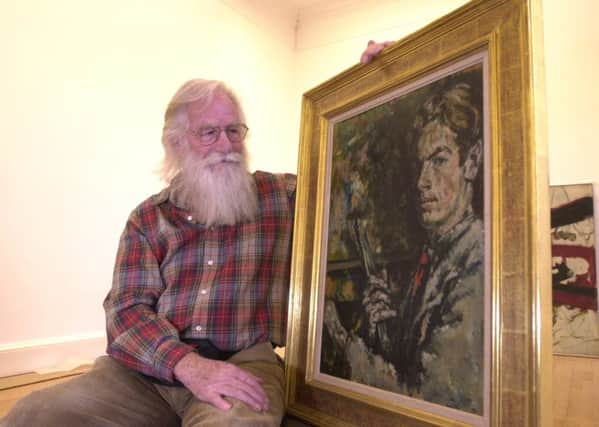Roger Cox: Davie artefacts could give key insight


In the spring of 2009, I was sent to a leafy corner of rural Hertfordshire to interview the artist Alan Davie at his home and studio. Then on the verge of turning 90 years old, he was considered by Patrick Elliott, senior curator at the Scottish National Gallery of Modern Art, to be “one of the top three or four living Scottish artists”.
I’d long been a fan of his wildly inventive, often dream-like paintings, which seemed to dance to a wild, primitive beat that was all their own, but I was more than a little apprehensive about actually meeting him. How do you even begin to interview somebody who you suspect might be 50 per cent artist, 50 per cent shaman?
Advertisement
Hide AdAdvertisement
Hide AdAs it turned out, I needn’t have worried: Davie was very easy company and we didn’t so much conduct an interview as – well – hang out. In spite of his age, he was still bursting with energy and keen to show me the canvases he was working on in his studio and also the piles of densely patterned biro drawings that seemed to serve as raw material for the paintings.
At one point, in mid-interview, while trying to make a point about the similarities in the ways we perceive sound and colour, he leapt out of his seat, strode over to his grand piano and began to play. We spoke about as much about his love of gliding as we did about his art.
The thing I remember most vividly, though, was going into his sun-drenched kitchen to get a cup of tea and marvelling at his huge collection of tribal art and artefacts – mostly masks and figurines. If Davie was tapping into some kind of primal spiritus mundi in his work, then I have no doubt these objects had a significant role to play.
Davie passed away last year, at the age of 93. A few days ago I received an e-mail from Sworders auctioneers, entitled “Household treasures that inspired giant of Scotland’s post-war art world”.
On 13 October, Sworders will sell off “musical instruments and tribal art” from Davie’s estate. A pair of masks has a guide price of £120-£150; a saxophone is expected to go for £150-£200.
When I contacted the National Galleries last week, a spokesman said they had no plans to purchase any of these items. I hope they find a few quid down the back of the sofa before the 13th, though, because even a small sampling of these objects would provide a fascinating insight into the mysterious places from which one of our greatest artists drew his inspiration.